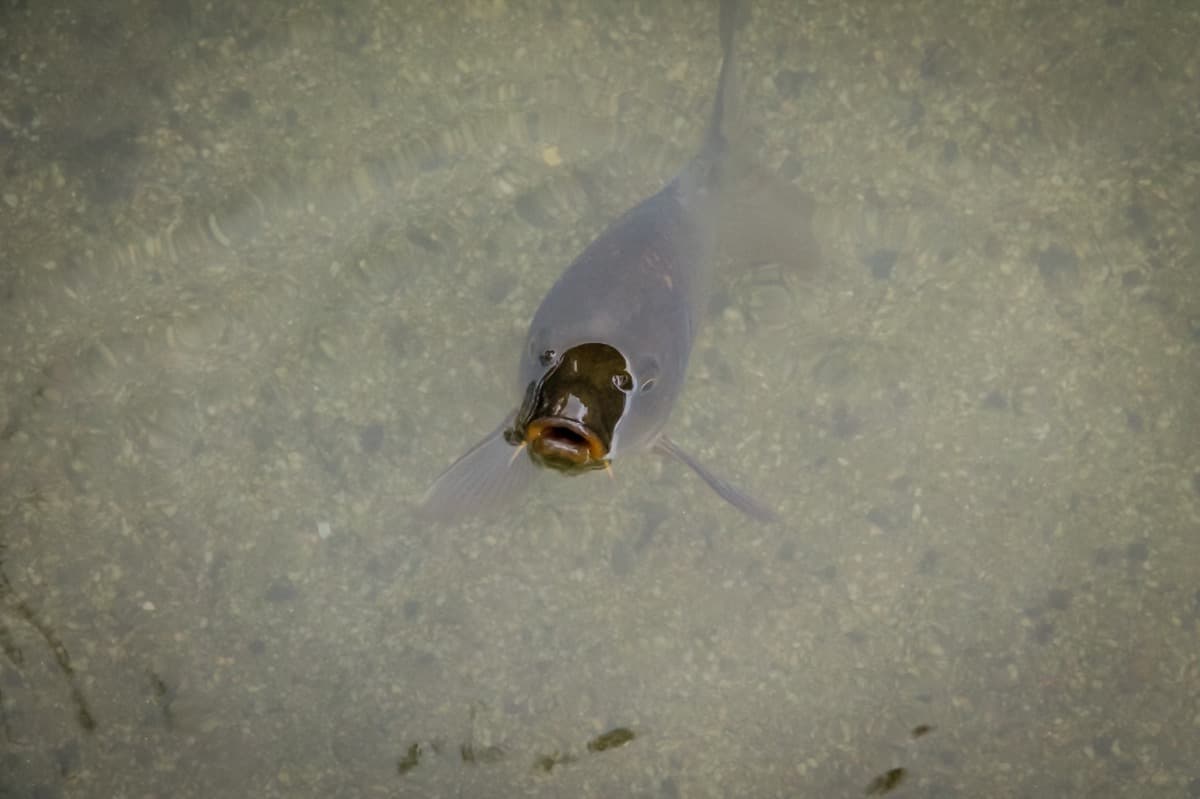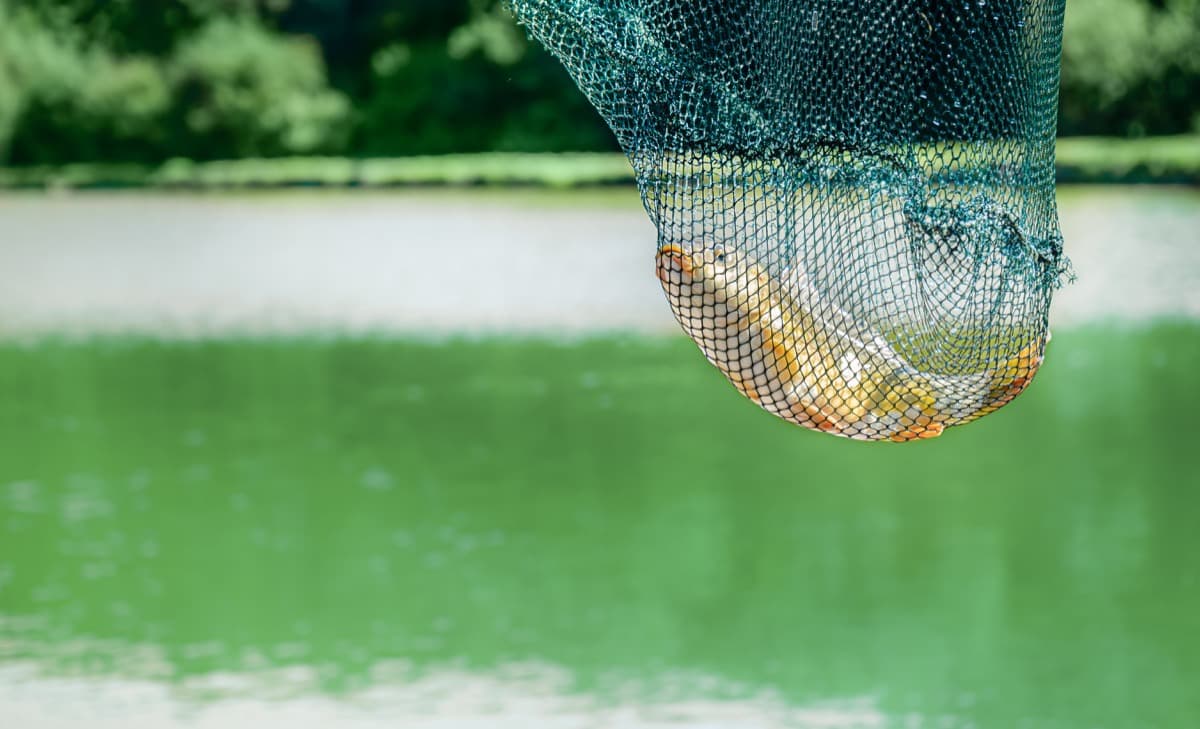Spring viremia of carp (SVC) is a deadly and contagious viral disease that affects farmed carp and related species, causing significant economic losses. “Infectious dropsy of carps” was the term given to the disease. The disease spring viremia of carp affects freshwater fish. A virus causes the disease, which can be harmful to fish.

It is especially harmful to young fish, with up to 90% mortality rates. The virus can spread through fomites and parasitic invertebrates, and eradication may require destroying all aquatic life in the affected pond. SVC has been around for over 50 years and kills 10-15% of one-year-old carp yearly.
Spring Viremia Management in Carp Fish
Causative Agents of Spring Viremia in Carp Fish
Spring viremia of carp (SVC) is a viral disease that affects common carp and other members of the Cyprinidae family. The disease is caused by the spring viremia of carp virus (SVCV), also known as Rhabdovirus carpio, which is a member of the Rhabdoviridae family and closely related to pike fry rhabdovirus.
The virus is spread through water and can infect fish of all sizes. SVCV strains vary in their pathogenicity and can be divided into four genetic groups. The disease is highly contagious and can cause significant economic losses in farmed carp and related species. SVCV is difficult to eradicate, and once it is established in a pond, elimination may require destroying all aquatic life.
Spread and Transmission of Spring Viremia in Carp Fish(SVC)
- Sick and healthy fish can carry spring viremia of carp virus (SVCV). It can be passed through feces, urine, gill and skin mucus, blister fluid, and swollen scale pockets.
- The disease spreads through direct contact or water, and the gills are the most common entry point. SVCV can also be spread by vectors like the carp louse and the leech, and it can live in water and mud for a few weeks. Birds that eat fish could also spread the disease.
- Eggs are not a major way that diseases spread from one person to another. Infected fish exhibit slow swimming, slow breathing, and a sluggish response to stimuli.
- The virus is transmitted through the water column, and infected fish can shed the virus for several weeks. Effective management plans should include ways to stop the spread of fomite and vectors.
- Various invertebrate vectors, including blood-sucking parasites like the leech Piscicola geometra and the carp louse Argulus foliaceus, can spread Spring Viremia of Carp (SVC).
- These parasites can become infected by feeding on the blood of infected fish and can transmit the virus to healthy fish.
Symptoms of Spring Viremia in Carp Fish(SVC)
- Experimental infections show incubation periods of 7 to 15 days.
- Fish up to one year old are most commonly affected, but older fish can also become ill.
- Clinical signs are nonspecific and can be carried with or without symptoms.
- Common disease symptoms in carp include a swollen abdomen, bulging eyes, inflammation or swelling in the vent, mucoid feces sticking to the body, small blood spots, darkened bodies, and pale gills.
- When sick, fish tend to gather at the water’s edge or the entrance to the pond. They swim and breathe slowly and don’t react quickly to anything.
- Late stages of the disease show loss of equilibrium with resting and leaning.
- Concurrent bacterial or parasitic infections can influence symptoms.
Diagnosis of Spring Viremia in Carp Fish(SVC)
- Diagnosis of SVC involves clinical suspicion based on systemic infection signs and increased mortality rates in cyprinid fish with water temperatures below 20°C.
- The clinical signs and lesions are not diagnostic independently; they need to be confirmed in a lab.
- Enteric septicemia of catfish and an atypical Aeromonas salmonicida infection are two possible causes.
- Lab tests include isolating viruses in cell cultures, killing viruses, doing a PCR assay, figuring out the nucleotide sequence of PCR products, immunofluorescence, ELISA, and transmission electron microscopy. SVCV can be found in tissue extracts using PCR, and viral antigens can be found in tissues.
- It is important to know that antibodies to SVCV can react with other rhabdoviruses, especially pike fry rhabdovirus.
In case you missed it: Loose Shell Syndrome in Shrimp: Symptoms, Management, Prevention, Causes, Control, and Treatment

Treatment of Spring Viremia in Carp Fish(SVC)
Raising the water temperature to above 20°C can prevent the virus from replicating and reduce the mortality rate of infected fish. Effect of Temperature on Incubation Period and Mortality Rate: The incubation period of SVC depends on water temperature, fish species, age, condition, quantity of virus, and environmental conditions. Temperature fluctuations also affect the mortality rate of infected fish. The mortality rate is highest at temperatures between 10-12°C and lowest between 17-26°C.
Prevention & Control Measures of Spring Viremia in Carp Fish(SVC)
- Depopulation and disinfection: SVC can spread quickly from one fish to another. Therefore, depopulating and disinfecting the affected ponds or tanks is essential to prevent the spread of the disease.
- Continuous rearing at 20-22 C: SVC virus thrives in water temperatures below 20°C. Therefore, maintaining the water temperature between 20-22°C can prevent the virus from replicating and reduce the incidence of the disease.
- Hygienic measures: Hygienic measures such as maintaining good water quality, avoiding overcrowding, and regular cleaning of tanks and equipment can prevent the spread of the disease. Avoiding potential virus carriers, such as infected fish or parasites, is also essential.
- Currently, vaccination is at an experimental stage, and there is no known cure for SVC. Therefore, effective control measures are essential to minimize the impact of the disease on fish populations.
Degree of Infection of Spring Viremia in Carp to Fish Age
The degree of infection and mortality rate also varies with fish age. Fry are most susceptible, with infection rates over 80% and mortality rates over 60%. The infection rate decreases with age, with adult fish having an infection rate of less than 30% and a mortality rate of less than 25%.
Influence of Water Temperature on SVCV Infection
The influence of water temperature on SVCV infection was studied using SPF carp infected with SVCV. The infected fish kept at 10-12°C had high virus values and mortality rates, while those kept at 20-22°C had higher antibody values and lower mortality rates.
In case you missed it: Systemic Vibriosis Management in Shrimp (Prawn): Disease Symptoms, Causes, Diagnosis, Treatment, Control, and Prevention

Conclusion
Early detection, proper management, prevention, and control measures are essential to minimize its impact. Measures such as depopulation and disinfection, continuous rearing at optimal temperatures, and hygienic practices can reduce the risk of infection. Although vaccination is still experimental, raising water temperatures above 20°C can be effective.
- Deworming Schedule for Dogs/Puppies: A Beginners Guide
- How to Prevent and Control Parasites in Goats
- Beneficial Insects in Pest Management
- Natural Solutions for Pest Control in Flower Gardens
- Types of Fungicides Used in Agriculture
- Common Issues in the Fruit Development Stage of Pomegranate Farming
- Fruit Development Issues in Papaya: Easy Solutions and Treatment
- Soil-Borne Diseases and How to Protect Your Plants
- Practices to Prevent Disease Spread in the Garden